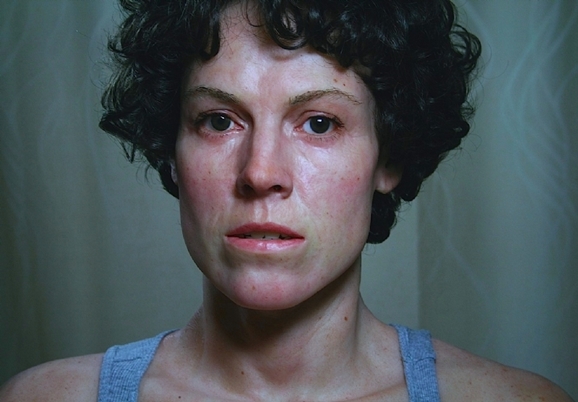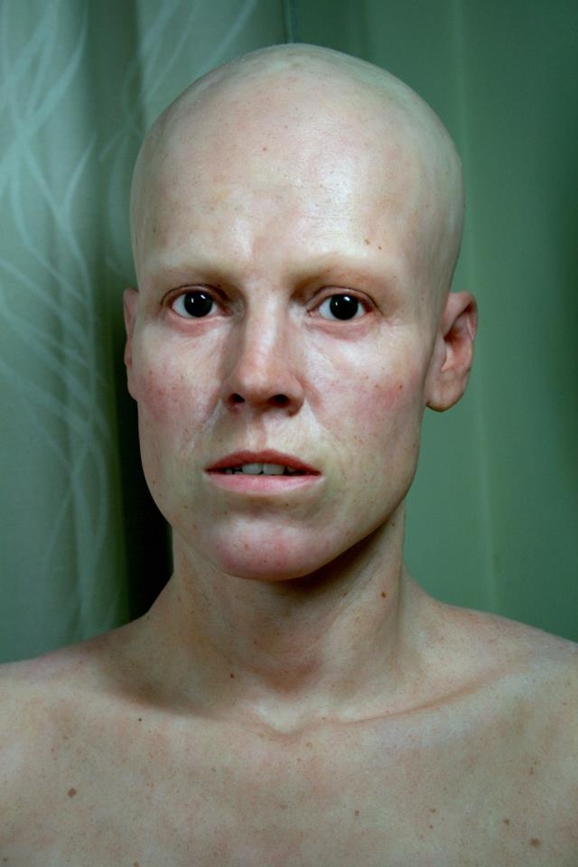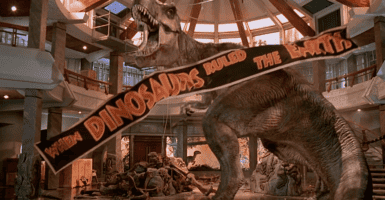Learn How A Sculptor Made An Amazing Model Of Ripley From Alien
This article is more than 2 years old
London portrait sculptor Steve Scott recently blew people’s minds as photos of his latest work, a hyper-realistic model of Sigourney Weaver’s Ripley character from the Alien films, made its way around the Internet. I understand journalists are supposed to be objective, but his work (including models of Dan Aykroyd, Arnold Schwarzenegger, Phil Davis, and Clint Eastwood) is amazing, and looks good enough to be filmed. If only he had also molded brains and central nervous systems.

Recently, the multi-talented Steve Scott did me the favor of answering a few questions I had concerning his creative output, both in sculpting and other areas. I’m no clinical psychologist, but based on his answers, I’m willing to believe that Steve Scott is not a silicone warlord, nor a poster child for obsessive compulsion. He’s just your average guy with above-average attention to detail.
First, let me commend you for the already diverse range of models you’ve created. To me, it shows a dedication to taste over perceived expectation. What genres of pop culture and areas of life are you most drawn to? And feel free to talk about Ghostbusters until they actually make a third one. Also, list your top five Sci-Fi movies, if you don’t mind.
Science fiction is definitely my favorite genre, and the science behind science fiction has always interested me. Not that I’m any good at science, you understand, but I do recognize that the best fiction is grounded with facts. Just as in sculpture, if you are going to sculpt a sci-fi creature, it will be 100 times more convincing if you take reference from nature.
Star Wars IV: A New Hope, E.T., Blade Runner, Aliens, Jurassic Park – Jurassic Park being my favorite by quite some margin. Although it is really an adventure fiction movie, it bases its story around actual science, and the fact is that we haven’t actually cloned a dinosaur yet – science fiction. Ghostbusters just misses out a close sixth there I think, such a great movie. It’s just pure nostalgia for me. I’m a total retro geek and I love looking back at the ’80s and ’90s from the perspective of an adult now.
I’m assuming you haven’t kidnapped these entertainers at knife-point in order to create what seems to be painstaking work. How do you make these things so pretty, and how long of a process is it?
Ha, no I didn’t kidnap anyone. Though I think the process behind kidnapping might actually be easier – no disrespect to any kidnappers out there, I’m sure they put a lot of effort into what they do!
The key to getting a nice neat finish at the end of a project such as this is patience – a lot of patience. You have to be clinical in every last process along the way or it will be reflected in the final piece. If you have a neat sculpture, you’ll get a neat mold from that. If you have a neat mold, then you’ll get a neat cast from that, and so on. It took about 14 weeks to complete Ripley. The sculpture takes between four and six weeks, and the rest is molding and finishing.

Do you see passion or profit taking over as far as the models are concerned? If NASA asked you to make a model of Neil Armstrong to place on the moon, would you?
I try not to sell my work, as they are done with a much larger purpose in mind. But sometimes the cost of their creation means I cannot justify keeping them, as we all have bills to pay. But that’s not to say that I think selling work is to sell out. An artist should always be proud of any commission or interest in their work, in my view. And we should be allowed to profit from our hard-earned skills, but currently there are very few ways for a portrait sculptor to do so. Which brings me back to my purpose and leads us quite fittingly onto your next question…
Let me paint a mental picture. You’re in your very own wax museum, which has just bought out Madame Tussauds. You yourself have meticulously created a particular setting for each of your models. Your songs are playing over the loudspeakers as visitors walk through. Next door is a small sound stage that you rent out for artists making short films. Is this anything like where you see yourself down the road?
That’s actually eerily close, and the Madame Tussauds part was a nice touch! But think bigger, and don’t think wax. Wax is a very static and old school material. It will always have its place in tradition, and the Madame Tussauds attractions will always keep that alive. But I mean to take these figures into the 21st Century with the hyper-realistic, kinetic qualities of silicone. Think realistic motion, think full-scale real-life classic film scenes that you can walk through as they are being directed. This latest piece that I have created is an example, a prototype and I am currently approaching studios, directors, and actors for their feedback.
Visit Steve at his Behance website as well as his Facebook page.

Post-script: Just because it’s trendy, I asked Steve what his opinions were about Disney buying out Lucasfilm, and he had this to say:
Well, I always used to think as a kid that Star Wars was Disney thanks to the amazing Star Tours ride at Disneyland. So if it’s anywhere near as good as that I’ll be happy! I think they pushed the CGI too far too soon with the prequels, there’s quite a bit of unconvincing stuff in there. Obviously, I loved the use of practical effects in the first 3, but maybe with the advancement of VFX over the past decade ILM and Disney can pull something out of the bag.












